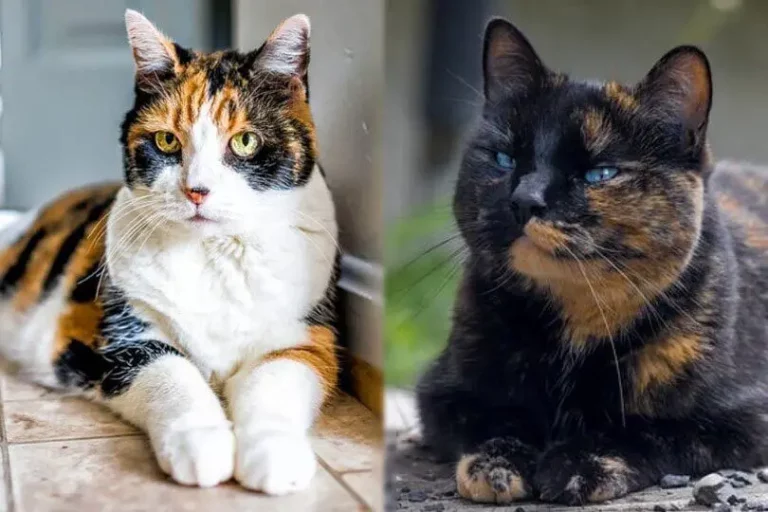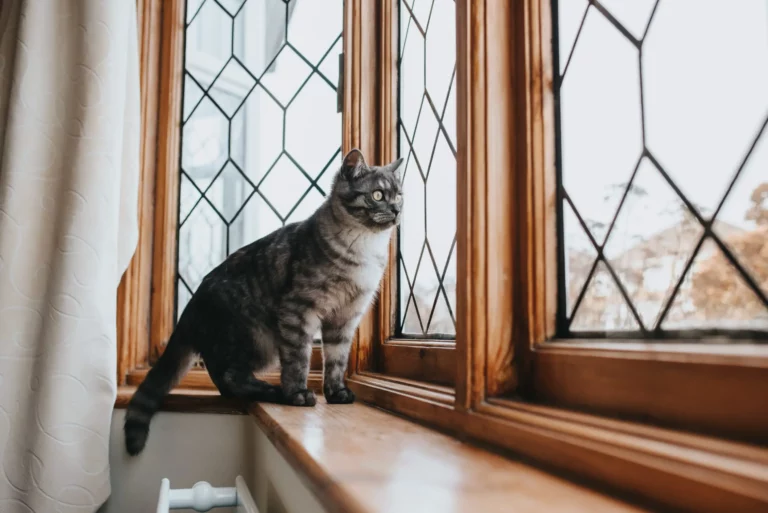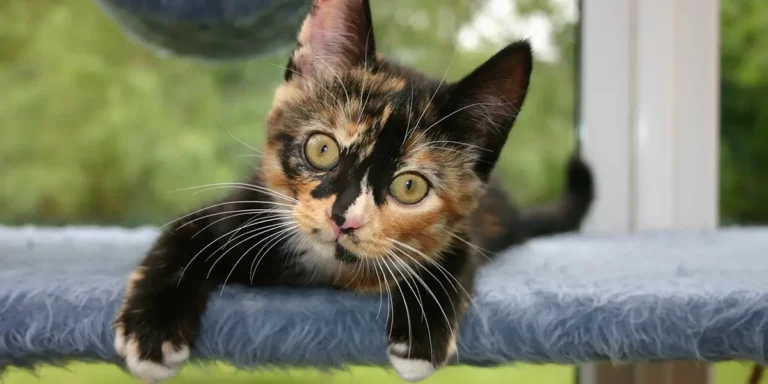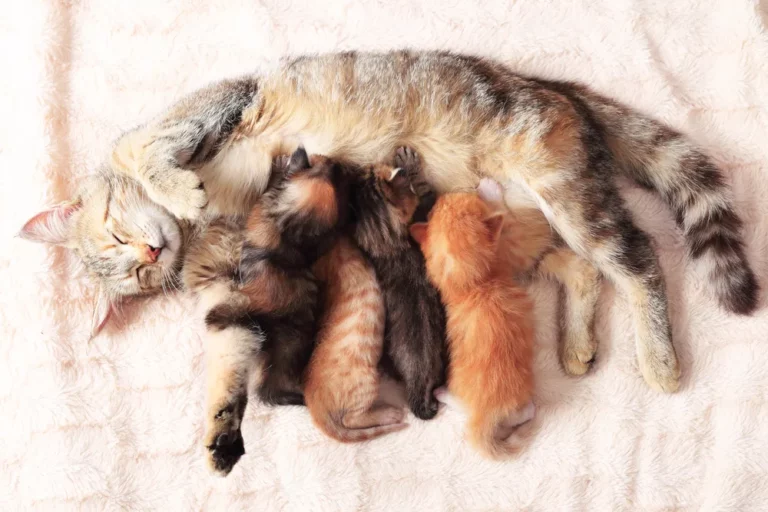10 Tips: Get Your Cat to Cover Their Poop & Why
Why doesn’t my cat cover her poop? Cats may not cover their poop due to factors such as territorial behavior, lack of satisfaction with the litter type, possible medical issues, or simply because it’s a learned behavior from their kittenhood where their mother might have done the covering.
This act, or lack thereof, isn’t just a random oversight by your feline friend but can stem from a myriad of psychological and physical factors, intertwined with their intrinsic feral instincts and domestic routines.
Exploring this unique feline behavior, we will unravel the varied reasons behind it and delve into practical tips that may gently guide your cat toward more desirable litter box manners.
From understanding their instinctual drives to mitigating any issues that may arise, understanding your cat’s litter habits requires a peek into their world, unearthing their likes, dislikes, fears, and the manner in which they mark their territory.
Key Takeaways:
- Instinctual Drives: Cats may leave their poop uncovered to assert dominance and mark their territory, especially in multi-cat households.
- Litter Box Dynamics: The type of litter used, cleanliness, and placement of the box play crucial roles in how a cat interacts with it.
- Health Factors: Neglecting to bury feces can sometimes point to underlying medical issues or discomfort related to the litter box.
Navigating through this guide, you’ll gain insights into the peculiar world of feline bathroom behaviors and garner tips to potentially alter any undesirable habits your cat may have adopted.
From deep-diving into the reasons they might not cover their waste to understanding when this might be a sign of something more concerning, we pave the way towards fostering a happy, healthy environment for your feline friend.
Why Cats Don’t Always Cover Their Poop?
1) Dominance and Territorial Behavior
Cats possess a unique social hierarchy, and their litter box habits often communicate their perceived status within it. A cat might deliberately leave its poop uncovered as a display of dominance or to mark its territory, especially in a household with multiple felines.
In the wild, dominant cats often leave their waste uncovered as a clear signal of their status to other cats. Thus, your kitty might be asserting itself in your home, declaring its confidence and comfort within its domain.
2) Health Concerns and Discomfort
Sometimes, a deviation in litter box habits, like not covering poop, might indicate health issues. Cats experiencing pain or discomfort during elimination due to conditions like constipation, diarrhea, or urinary issues might associate this pain with the act of burying their waste.
Therefore, any significant or sudden change in litter box habits warrants a visit to the vet to rule out potential health issues.
3) Litter Box Conditions
Cats are notably fussy about the cleanliness and type of their litter. If the litter box is too dirty, they might avoid spending extra time in it to cover their waste. Similarly, if they dislike the texture or scent of the litter, they might perform a hasty bathroom visit without the usual burying afterward.
It’s vital to maintain a clean litter box and choose a type of litter that your cat prefers to encourage proper use.
4) Stress and Environmental Changes
Cats might alter their behavior, including their bathroom habits, in response to stress or changes within their environment. Moving houses, a new pet, or even a change in your daily routine might upset your cat.
Leaving poop uncovered might be a reaction to these stressors, representing a call for attention or a manifestation of their anxiety.
5) Personality Quirks
Lastly, it’s crucial to acknowledge that all cats are individuals, each with its own set of peculiar habits and preferences. Some cats might simply not have the inclination to bury their waste, even if no dominance, health, or environmental factors are in play.
Appreciating and respecting their idiosyncrasies, while ensuring a clean and pleasant home environment, is pivotal. Understanding your feline friend’s unique personality and preferences is the first step in managing and accepting their litter box habits.
No products found.
Detailed Exploration: Age & Habits
Old Cat Stopped Covering Poop
Aging brings about a myriad of changes in a cat, encompassing alterations in physical abilities, cognitive function, and habits. If your older cat has ceased covering its waste, there could be various underlying reasons tied to its advancing age.
Arthritic Pain and Physical Discomfort: Senior cats frequently battle with arthritis, making the physical act of crouching and covering their waste painful or cumbersome. A once diligent pooper might relinquish this habit to avoid the associated pain.
Cognitive Decline: Older cats may experience cognitive dysfunction, a condition somewhat akin to dementia in humans. This can lead to them forgetting previously learned habits, including covering their poop.
Sensory Decline: Aging cats might also face deteriorating sight or smell, which can affect their ability to effectively navigate and utilize the litter box.
Health Issues: Cats are masters at masking pain. A senior cat that changes any habitual behavior, including litter box habits, should be evaluated by a vet to rule out health problems.
Providing a litter box with low sides, ensuring it’s in an accessible location, and maintaining its cleanliness can assist older cats in adhering to their bathroom routine as comfortably as possible.
Kitten Steps in Poop: Strategies for Mess-Free Learning
Little paws trekking through the litter box might find themselves accidentally stepping in their mess. This isn’t just a nuisance for owners but can also be unhygienic for the kittens. Understanding and mitigating this issue involves exploring the roots of the problem and implementing kitten-friendly solutions.
Litter Training Challenges: Kittens, especially those still learning the ropes of litter use, might struggle with the coordination and strategy involved in burying their poop without stepping in it.
Lack of Maternal Guidance: In some cases, kittens who were separated from their mothers too early may not have had adequate demonstrations of litter box use and may thus be clumsier in their initial attempts.
Box Size and Litter Type: A litter box that’s too large or too high for a little kitten might make it challenging for them to navigate without stepping into their waste. Similarly, a litter type that doesn’t easily clump may result in messy situations.
Curiosity and Play: Kittens are inherently playful and curious, and they might unwittingly step in their poop while playing around in the litter box.
To assist your kitten, consider providing a kitten-sized litter box with low sides during their early weeks. Use a kitten-friendly, non-clumping litter to ensure safety and ease of use. Regularly clean the box to reduce the chances of accidental stepping, and gently guide your kitten through the process, praising them when they get it right to reinforce positive litter habits.
Pee & Poop: Distinguishing Litter Box Habits
Why Doesn’t My Cat Cover Her Pee?
For many cat owners, observing litter box habits can unravel a tapestry of peculiarities, each strand representing a unique behavioral quirk of their feline friends.
Particularly baffling is when a cat diligently buries its feces but leaves its urine uncovered, presenting an enigma wrapped in mystery and quite likely, an unpleasant odor.
Territorial Messages: Uncovered urine might be your cat’s bold statement. In the wild, dominant cats may deliberately leave their pee unburied as a way of marking territory and asserting dominance.
Your indoor kitty might be channeling this intrinsic trait, using the potent scent of their urine as a declarative signal to all who dare to approach their domain.
Texture and Consistency Preferences: Cats have distinct preferences when it comes to the litter they tread upon. Some may find the wet, clumpy texture of soaked litter unpleasant underfoot and may avoid interacting with it any more than absolutely necessary.
Sensitivity to Smells: Ironically, the acute sensitivity of a cat’s nose might dissuade them from burying their urine. The ammoniacal stench of cat pee becomes even more pungent when interacted with, and a cat might opt to avoid this intensified odor by leaving their urine exposed.
Health Considerations: A cat that suddenly alters its bathroom habits, such as changing its urine-burying behavior, warrants a check for urinary tract infections or other health issues. Such shifts might be their way of signaling discomfort or pain associated with urination.
Personal Preference: Lastly, as every cat parent knows, felines are creatures of distinct individuality. Some might simply choose not to bury their urine, a personal quirk engrained in their bathroom behavior.
To encourage more desirable litter box habits, consider experimenting with different types of litter, ensuring the box is kept scrupulously clean, and providing ample opportunities for your cat to establish territory in less olfactorily offensive ways. In every instance of altered or perplexing behavior, however, a vet check should be the first step to rule out potential underlying health issues.
10 Tips to Encourage Your Cat to Cover Their Poop
Embarking on the journey of modifying a cat’s litter box behavior requires patience, attentiveness, and a gentle approach. Here’s how you can gently nudge your kitty towards adopting a more sanitary poop-burying routine:
1) Prioritize Cleanliness
Ensure that the litter box is always clean. Cats might avoid burying their poop in a dirty litter box due to the unpleasantness of digging through already-soiled litter.
2) Choose the Right Litter
Every cat has its own preference when it comes to litter type. Experiment with different textures and scents to find one that your cat is more willing to dig into.
3) Correct Box Size
A box that’s too small may dissuade your cat from adequately covering their waste. Ensure that the box is 1.5 times larger than your cat to give them plenty of space.
4) Optimal Placement
Situate the litter box in a quiet, low-traffic area where your cat can do their business in peace, making them more likely to take time burying their poop.
5) Multiple Boxes
In multi-cat households, providing numerous options helps prevent territorial disputes and ensures every kitty has access to a clean box.
6) Gradual Introduction
If you’re introducing a new type of litter or box, do so gradually by mixing in the new litter with the old and slowly transitioning to avoid unsettling your cat.
7) Respect Privacy
Some cats prefer doing their business in privacy. Litter boxes with covers or placed in discrete locations might make them feel more secure and willing to spend time burying.
8) Veterinary Check
Rule out any medical reasons that might be influencing their litter box habits by visiting the vet.
9) Positive Reinforcement
Reward your cat when they do exhibit the desired behavior of covering their poop. A treat or extra cuddles can make them associate the action with positive outcomes.
10) Limit Stress
Changes in the environment, like moving homes or introducing a new pet, can affect litter box habits. Ensure your cat has a safe, stable environment to mitigate stress-related behavioral changes.
Embracing these tactics, with an overarching aura of patience, can pave the way towards cultivating healthier litter box habits in your feline friend, fostering a cleaner environment for both pet and owner.
Behind the Behavior: Psychological and Health Implications
Cats communicate with us in myriad ways, and one such unique communication medium is through their litter box behaviors. Deciphering these signals not only aids in understanding their physical wellness but also taps into the intricate web of their psychological state.
Psychological Factors
Cats exhibit a wealth of emotions, and these emotional fluctuations or stressors can directly transpose onto their litter box etiquette.
The act of not covering their feces can be a manifest sign of stress, anxiety, or dominance. In multi-cat households, a cat may intentionally leave their poop uncovered to assert dominance or mark their territory, a deeply embedded instinct even domestic cats can’t always suppress.
Conversely, a once meticulous cat who suddenly abandons the act of covering may be broadcasting their anxiety or displeasure regarding a change in the household. Whether it’s a shift in the daily routine, a new pet, or even different litter, these alterations can resonate deeply with a cat’s emotional stability.
Health Considerations
When dissecting why a cat has ceased covering their poop, we must cast a lens on their physical health. Health issues, especially those related to digestion or excretion, may make the act of covering feces uncomfortable or painful.
For instance, arthritis might make the physical act of scraping and covering painful, thus, they avoid it. Similarly, if a cat experiences pain during elimination, they may associate the pain with the litter or the action of covering it, thereby evading the act altogether.
A Deep Dive into Their World
Embarking into the psyche of a cat demonstrates the importance of synthesizing behavioral observations with knowledge of their emotional and physical wellness.
It underscores the pivotal role that a meticulously maintained litter box and acute observations of litter box habits play in unraveling both the physical and emotional threads of a cat’s well-being.
By weaving through these interlinked facets, you pave the way for a deeper understanding and connection between you and your feline friend, ensuring that their silent communications through such behaviors do not go unnoticed or misunderstood.
No products found.
Crafting a Cat-Friendly Litter Environment
Creating an environment where your cat feels safe, secure, and comfortable while using their litter box is crucial in addressing and possibly correcting uncovered poop issues. Cats, despite their often aloof demeanor, crave cleanliness, privacy, and security when it comes to their elimination habits.
Prioritizing Privacy
Cats, much like humans, seek a modicum of privacy when attending to their personal needs. A litter box placed in a quiet, low-traffic area of your home affords them the seclusion they desire.
Consider a location that is easily accessible, yet away from the hustle and bustle of daily life. Moreover, if you’re in a multi-pet household, ensure that each cat has their own box plus one extra to avoid territorial disputes.
Cleanliness is Key
Maintaining a spotless litter box is paramount to encouraging your cat to not only use it but also feel inclined to cover their waste. Cats are more likely to bury their poop in a clean environment to prevent the scent from attracting predators, a natural instinct that prevails even in the domestic setting.
Regular cleaning, coupled with choosing a litter that your cat prefers, propels a welcoming environment for them.
Accommodating Preferences
Bearing in mind that each cat harbors their own set of preferences, it is vital to cater to these to forge an appealing litter setup. Some cats may prefer uncovered boxes, while others may seek the security of covered ones.
The type of litter, be it clumping, non-clumping, scented, or unscented, can also steer their inclination to use and cover their waste efficiently.
Accessibility and Comfort
As cats age or if they experience mobility issues, accessing the litter box can become a herculean task. Ensuring that the box is not only reachable but also easy for them to enter and exit is crucial. A box with lower sides, for instance, might be more suitable for older cats or those with arthritis.
Concluding Thoughts on Crafting a Niche
Constructing a litter environment that resonates with your cat’s preferences and needs not only amplifies their comfort but also enhances the likelihood of them adhering to desirable litter box etiquette.
It becomes a melding point where their inherent instincts and your insightful interventions meet, fostering a harmonious solution to the dilemma of uncovered poop.
Navigating Multi-Cat and Household Dynamics
When numerous paws patter around the home, the dynamics around litter box behaviors can become notably complex. Managing multi-cat scenarios and understanding how different household members (both human and feline) influence a cat’s litter box habits require a thoughtful approach and strategic planning.
Understanding Territoriality Among Cats
Cats are inherently territorial creatures. Their realm, which includes their litter box, is sacrosanct. In a multi-cat household, establishing clear, non-contested territories for each feline is imperative.
It’s not unusual for cats to avoid covering their poop as a sign of dominance, signaling to other cats that this territory is under their rule. Understanding this dynamic helps in crafting strategies like placing multiple litter boxes in varied, secure locations around the home.
Influences of Human Household Members
Believe it or not, our behaviors, habits, and routines can heavily influence our cats’ behaviors. Consistent routines and a stable environment provide a sense of security to felines, thereby possibly positively affecting their litter box habits.
Consequently, disturbances or changes, like moving homes or a new person moving in, can disrupt their routines, leading to alterations in their litter box habits as a stress response.
Acknowledging and mitigating the stressors with patience and strategies like slow introductions to new experiences or beings can pave the way for smoother transitions and stable litter habits.
Interplay Between Cats and People
The relationship between cats and their human companions in a household intertwines with litter box habits too. Cats may leave their poop uncovered to grab attention from their humans, especially if they have associated it with previous reactions.
Positive reinforcement, where good litter box habits are rewarded and negative ones are not punished but rather addressed by understanding the underlying cause, establishes a robust platform for healthy habits.
Harmonizing Habits in a Varied Household
Implementing a synchronized strategy where every household member understands and respects the needs and behaviors of the feline members is vital.
Consistency is key, and ensuring that each person adheres to the established routines and strategies for managing litter box habits will further assure your cats, fostering an environment conducive to healthy habits.
In essence, a stable, secure, and understanding household that respects and caters to the diverse needs of each member, both human and feline, nourishes a platform where desirable litter box behaviors can be encouraged and nurtured, navigating through the intricate dynamics with finesse and empathy.
How to Handle Persistent Issues
Tackling persistent litter box issues goes beyond simple adjustments and dives into a detailed understanding of your cat’s mindset, physical health, and environment.
A steadfast approach to comprehending the root of the issue, coupled with consistency in implementing changes, forms the backbone of managing persistent problems.
Consistent Application of Changes
Reiteration and consistency are pivotal. Alterations to routines or environments need to be steady to allow your cat to adapt and form new habits.
From the strategic placement of litter boxes to gradually introducing new litter types, maintaining a consistent approach ensures your cat doesn’t get confused or stressed, which can exacerbate the issue.
Veterinary Insights
Persistent problems may have underlying health issues. Regular check-ups and discussions with your veterinarian will aid in identifying or ruling out medical concerns like arthritis or gastrointestinal problems that could be influencing their litter habits.
Behavioral Therapy for Cats
Some cats might benefit from behavioral therapy, where professionals step in to understand the nuanced triggers and assist in creating a tailored plan to address and alter unwanted behaviors.
Modifying the Living Space
Sometimes, despite all efforts, alterations to the living space may be required, like adding ramps for easier access to litter boxes for elderly cats or ensuring privacy and tranquility in the designated ‘bathroom’ area to encourage positive litter habits.
By intertwining consistent, compassionate care with professional insights, handling persistent issues can transition from a challenge to a managed, structured process.
Conclusion
In the intricate world of feline behaviors, understanding their litter box habits, especially those concerning covering, or not covering their poop, intertwines with their psychological, physical, and environmental realms.
This exploration not only elevates our comprehension of our furry companions but also enhances our ability to provide them with a secure, understanding, and accommodating home environment.
Your thoughts, experiences, and feedback on navigating through your cat’s litter box adventures are warmly welcomed.
References
- Comfort Zone. “6 Tips to Get Your Cats to Cover Their Poop”. Comfort Zone.
- The Spruce Pets. “Why Cats Don’t Always Cover Their Poop”. The Spruce Pets.
- The Wildest. “Why Cats Don’t Always Cover Their Poop”. The Wildest.
- Various Contributors. “My cat doesn’t cover her poop anymore: What should I do?”. Quora.





![Why Do Cats Paw Around Their Food Bowls? [7 Reasons]](https://www.warmlypet.com/wp-content/uploads/2023/01/Cat-paws-in-a-bowl-768x513.webp)

